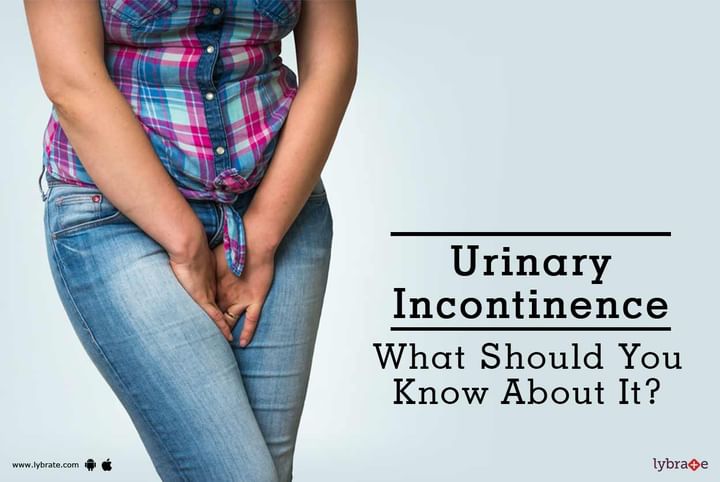Urinary Incontinence - What Should You Know About It?
Urinary incontinence (UI), also known as involuntary urination, is any uncontrolled leakage of urine. It is a common and distressing problem, which may have a large impact on quality of life. It is more common in older women.
The severity ranges from occasionally leaking urine when you cough or sneeze to having an urge to urinate that's so sudden and strong you don't get to a toilet in time.
For most people, simple lifestyle changes or medical treatment can ease discomfort or stop urinary incontinence.
Urinary incontinence in females
Major risk factors:
There are four main types of incontinence:
- Urge incontinence is due to an overactive bladder in which you have a sudden, intense urge to urinate followed by an involuntary loss of urine. You may need to urinate often, including throughout the night. Urge incontinence may be caused by infection, neurological disorder or diabetes.
- Stress incontinence is due to poor closure of the bladder. Urine leaks when you exert pressure on your bladder by coughing, sneezing, lifting something heavy, laughing, exercising etc.
- Overflow incontinence is due to either poor bladder contraction or blockage of the urethra in which you may experience frequent or constant dribbling of urine due to a bladder that doesn't empty completely.
- Functional incontinence is due to medications or health problems. For example, if you have severe arthritis, you may not be able to unbutton your pants quickly enough.
Causes
The causes and the type of incontinence are closely linked.
Stress incontinence
-
Pregnancy and childbirth
-
Menopause, as falling estrogen can make the muscles weaker
-
Some pelvic surgical procedures
-
Age
Urge incontinence
-
Cystitis (an inflammation of the lining of the bladder)
-
Neurological conditions, such as multiple sclerosis (MS), stroke, and Parkinson's disease
-
Diabetes
Overflow incontinence
-
Enlarged prostate gland in males
-
Tumor pressing against the bladder
-
Urinary stones
Total incontinence
-
Anatomical defect from birth
-
A spinal cord injury which impairs the nerve signals between the brain and the bladder
-
A fistula, when a tube or channel develops between the bladder and a nearby area
Other causes:
Some medications like diuretics, antihypertensive drugs, sleeping tablets, muscle relaxants and alcohol etc.
Management
-
Treatment options range from conservative treatment, behavior management, bladder retraining, Exercise, medications and surgery.
-
The option of treatment depends on the correct diagnoses.
-
Weight loss is recommended in those who are obese.
-
Avoiding or limiting consumption of caffeine and alcohol helps a lot.
-
Behavioral therapy is not curative for urinary incontinence, but it can improve a person's quality of life.
-
Efforts to increase the time between urination, known as bladder training, is recommended in those with urge incontinence.
-
Surgery may be used to help stress or overflow incontinence. Common surgical techniques for stress incontinence include slings, tension-free vaginal tape, trans obturator tape (TOT) and bladder suspension among others.
Kegel Exercises
-
Exercising the muscles of the pelvis such as with Kegel exercises are a first line treatment for women with stress incontinence.
-
To help your concentration and the efficiency of your movements, make sure you breathe in and out as you perform each set of Kegels, instead of holding your breath.
-
You can do these exercises either sitting in a chair or lying on the floor.
-
Once you know what the movement feels like, do Kegel exercises 3 times a day
-
Make sure your bladder is empty, then sit or lie down. Tighten your pelvic floor muscles. Hold tight and count to 8. Relax the muscles and count to 10. Repeat 10 times, 3 times a day (morning, afternoon, and night).
-
Pull-in Kegels: To perform a pull-in kegel, think of your pelvic floor muscles as a vacuum. Tense your buttocks and pull your legs up and in. Hold this position for 5 seconds and then release it. Do this 10 times in a row.
-
If your back or belly ache a bit after you complete a set of Kegel exercises, then it's an indication that you're not doing them correctly.
Ayurvedic management
- Basti (medicated enema): It is done to give strength to pelvic muscles.
- Uttarbasti (intraurethral instillation of sterile oil or ghee): It is recommended in all types of urinary disorders and especially done to strengthen tissues and to pacify vitiated dosha from the tract.
- Pichu application: A sterile tampoon soaked with medicated oil such as yashti tailam/ mooshak tailam is kept in vagina to give strength to muscles.
Medicines
Shilajit, Gokshur, Punarnava, Chandan, Guduchi, Yashtimadhu, Ashwagandha, Shatavari, Ushir, Sariva, etc.
Some medicinal preperations are useful when taken under proper guidance e.g. Varunadi kashay, Chandraprabha vati, Goksuradi guggul, Vishtinduk vati etc.



+1.svg)
